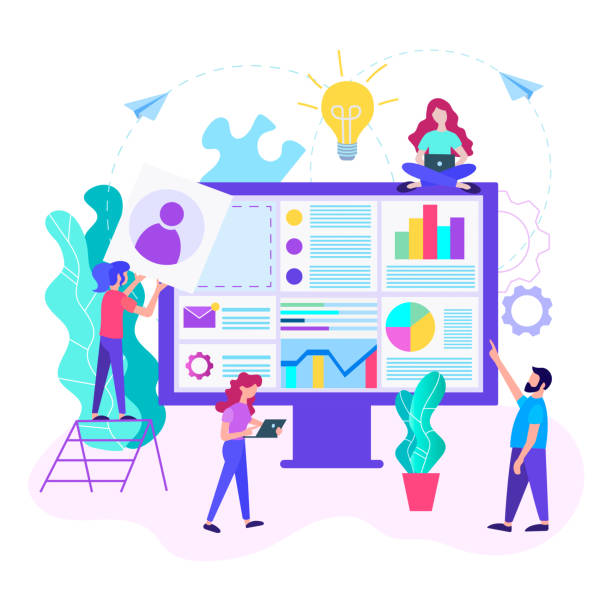The Importance of Multilingual Website Design in Today’s World
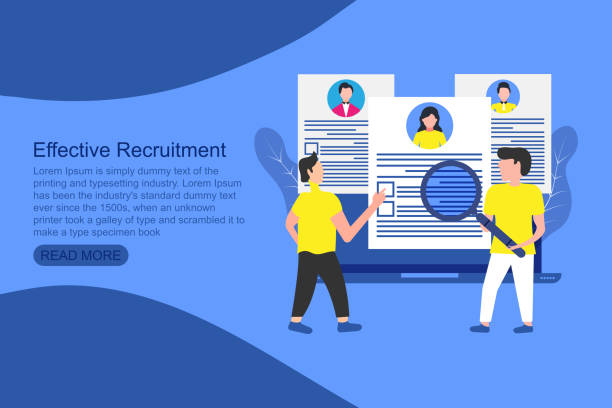
In the #AgeOfCommunication and #Globalization, an online presence is vital for any business, and this presence is not just about having a simple website, but also about expanding its capabilities for international audiences.
#MultilingualWebsiteDesign is a fundamental step to achieve this goal, enabling businesses to connect with their audiences worldwide in their native language.
This approach not only significantly broadens the #TargetMarket but also greatly helps increase #Trust and brand credibility.
#Today, monolingual websites are like isolated islands in the vast ocean of the internet and cannot meet the needs of an international market.
With multilingual website design, you find countless opportunities to attract new customers and expand your activities on a global scale.
This is an #Illustrative action for the strategic importance of a website that is not limited by geographical boundaries.
Increased competition in global markets compels businesses to seek innovative ways to differentiate themselves.
Internationalization and content localization are two main pillars in the strategy of multilingual website design.
A website that is only available in one language loses a vast portion of its market potential.
Imagine a potential customer from Germany or Japan visiting your website and only seeing English content; this issue can quickly lead to losing that customer.
But if the same website also offers its content in German or Japanese, the probability of converting that visitor into a customer dramatically increases.
This step is not only a competitive advantage but also demonstrates your respect for different cultures and languages worldwide.
Furthermore, multilingual website design also helps improve SEO.
Search engines like Google prefer multilingual websites for localized search results in different regions.
This means your website will have a higher chance of appearing in search results for users in various countries.
This #Analytical aspect shows how a comprehensive strategy can contribute to organic and sustainable growth.
Additionally, a multilingual website can serve as an #Educational tool for international audiences, providing them with rich and diverse content and establishing a deeper connection with them.
This approach not only increases visitors but also improves engagement and conversion rates.
Tired of losing customers due to poor e-commerce website design? With Rasaweb, solve this problem permanently!
✅ Increase sales and visitor-to-customer conversion rates
✅ Smooth and engaging user experience for your customers⚡ Get Free Consultation
Competitive Advantages of Multilingual Websites

Having a #MultilingualWebsite is not merely an additional feature; it is a powerful competitive #Advantage in today’s global #Market.
This feature allows companies to surpass competitors who operate only in one language.
#Today, every business looking to expand its activities beyond domestic borders should consider multilingual website design.
This not only provides access to new markets but also enhances brand credibility and image internationally.
A multilingual website gives your audience a sense of closeness and greater connection, as they can understand the content in their native language, and this sense of comfort directly influences their decision to purchase or use your services.
One of the biggest advantages of multilingual website design is the significant increase in potential #Audience.
By providing content in various languages, you can reach large segments of the world’s population who do not speak your website’s primary language.
This is particularly important in countries where English is not the first language.
Research shows that many users prefer to make purchases from websites that offer content in their own language.
This is an important #Analytical aspect that shows how localization can increase conversion rates.
Furthermore, these websites perform better in local search results in various countries, which greatly helps increase organic traffic.
A multilingual website also leads to improved customer relationships and increased trust.
When customers feel that a business respects their language and culture, they develop greater loyalty to that brand.
This approach is not #UnquestionableContent; rather, it is a proven strategy that yields tangible results.
Furthermore, these types of websites serve as a #Specialized tool to showcase a company’s dynamism and innovation.
Implementing a #MultilingualPortal requires precision and planning, but its Return on Investment (ROI) can be very high.
Ultimately, multilingual website design enables you to collect valuable data and insights from various markets, which is highly beneficial for future strategic decisions.
Challenges and Solutions for Multilingual Website Design

Despite numerous advantages, #MultilingualWebsiteDesign also comes with unique #Challenges that must be carefully considered before starting a project.
One of the first challenges is #ContentManagement.
Accurate and high-quality content translation into multiple languages, ensuring brand message consistency, and continuous updating of all language versions can be complex.
#Today, Translation Management Systems (TMS) and Content Management Systems (CMS) with multilingual capabilities have simplified this process, but choosing the right tools and an experienced team for translation and localization is essential.
This is an important #Educational aspect that requires precise planning.
In addition to translation, localizing content for different cultures is also highly important to ensure your message is conveyed correctly and to prevent any cultural misunderstandings.
Another challenge relates to #TechnicalAspects, including URL structure, implementing hreflang tags for SEO, and ensuring website loading speed in different regions.
Multilingual website design should be such that it provides a seamless user experience across all languages, and search engines can easily identify and index different language versions.
Failure to observe these points can lead to serious SEO problems and render your efforts futile.
For example, for each language and region, you must have a unique URL so that search engines can correctly identify it.
This is a #Specialized part of the process that requires technical knowledge.
Finally, the issue of #Cost and #Maintenance is also of particular importance.
Multilingual website design and its maintenance can be more expensive than a monolingual site, as it involves translation, localization, testing, and continuous updates for each language.
However, with proper planning and effective solutions, these challenges can be turned into opportunities.
Choosing a suitable translation strategy (manual, machine, or hybrid) and a scalable platform can control costs and increase efficiency.
This is practical #Guidance that should be considered.
For further clarification, the table below shows some of the most common approaches for multilingual website design and their advantages and disadvantages:
| Approach | Advantages | Disadvantages |
|---|---|---|
| Subdomain (subdomain.example.com) | Easy local SEO management, content separation | Requires separate management for each subdomain, may be slightly weaker in terms of domain authority. |
| Subdirectory (example.com/fa) | Better SEO due to main domain authority, more centralized management | Requires a strong CMS for content management, may be less optimal for some local campaigns. |
| Dedicated Domain (example.fr) | Best for local SEO, higher trust from native users | High cost, requires separate maintenance and management for each domain, more complexity in internal linking. |
| URL Parameter (example.com?lang=fr) | Relatively easy to implement | Weak for SEO, may be considered duplicate content by search engines. |
Choosing the Right Platform and Tools for Multilingual Website Design

Choosing the right #Platform and #Tools is the cornerstone of success in #MultilingualWebsiteDesign.
#Today, there are numerous options for building and managing multilingual websites, each offering its unique features and capabilities.
Content Management Systems (CMS) like #WordPress, #Joomla, #Drupal, and #Shopin all have powerful plugins and modules to support multilingualism.
Platform selection should be based on specific project needs, budget, and the technical capabilities of the team.
This decision is a #Specialized aspect that will directly impact the site’s efficiency and scalability.
For example, WordPress, with plugins like WPML (WordPress Multilingual Plugin) or Polylang, has greatly simplified the possibility of multilingual website design.
These plugins allow you to translate and manage content, themes, menus, and even widgets in different languages.
WPML is particularly suitable for large and complex projects and also offers powerful SEO capabilities.
Joomla and Drupal also have internal tools and third-party plugins for multilingual management, which are applicable for larger-scale projects and deeper customizations.
Platform selection should be done carefully and after a complete #Analysis of current and future needs.
In addition to CMS, #Translation and #Localization tools are also of great importance.
Some of these tools include Translation Management Systems (TMS) that organize the translation and review process.
Also, machine translation services like Google Translate API can be used in initial stages or for non-sensitive content, but for key and specialized content, it is recommended to use human translators to ensure translation accuracy and quality.
This is important #Guidance for maintaining content quality.
Some platforms even offer #Engaging and interactive features to attract international users, which can improve the user experience.
Multilingual website design with the right tools increases efficiency and reduces time to market.
This process involves careful selection of tools that can support the development and maintenance of your multilingual website in the long term and provide a strong platform for international growth.
Research shows that 80% of customers trust companies with professional websites more. Does your current website inspire this trust?
With Rasaweb’s corporate website design services, solve the problem of customer distrust and weak online image forever!
✅ Create a professional image and increase customer trust
✅ Attract more sales leads and grow your business
⚡ Get Free Consultation
Multilingual SEO: A Path to Greater Visibility
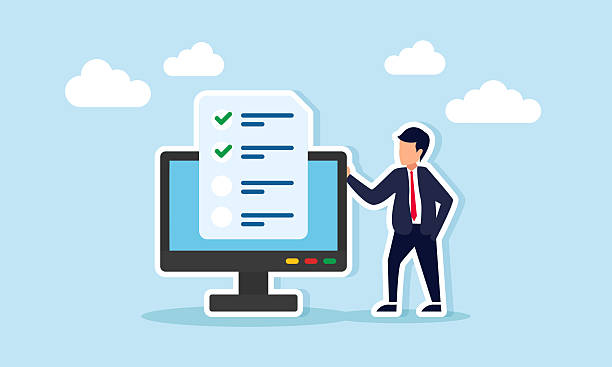
One of the most important aspects in #MultilingualWebsiteDesign is #SearchEngineOptimization (SEO) on an international scale.
Without effective multilingual SEO, even the best translations and localized content will hardly be discovered by the target audience.
#Today, competition for visibility in Search Engine Results Pages (SERPs) is fierce, and every company needs a #Specialized SEO strategy for each language and geographical region.
This means not only translating keywords but also includes local keyword research, optimizing content for specific search phrases in each language, and correctly implementing hreflang tags.
This process is an #Analytical step that requires great precision.
The hreflang tag is a vital signal for search engines, informing them that different versions of a page exist for specific languages or regions.
This tag helps prevent #DuplicateContent and ensures that users are directed to the correct language version of the content.
For example, if your website has both an English and a Persian version, correct use of hreflang ensures that Persian-speaking users are directed to the Persian page and English-speaking users to the English page.
This is very important technical #Guidance that must be precisely implemented in multilingual website design.
Also, creating an appropriate URL structure (like subdirectories or subdomains) for each language is very important for SEO, as explained in the challenges section.
In addition to technical aspects, #SEOContent in multiple languages must also be produced with great care.
This includes translating and localizing meta descriptions, page titles, and image alt texts.
Keywords must be researched separately for each language, as keyword equivalents in different languages may have different search rates and user intent.
An #Educational content strategy can help teams learn best practices in this area.
Also, acquiring backlinks from reputable local websites helps improve your site’s credibility and ranking in that region.
Multilingual website design, considering multilingual SEO, allows your website to #Compete globally and reach a wider audience.
This is a strategic investment for visibility and growth in international markets.
Content Strategy in Multilingual Websites
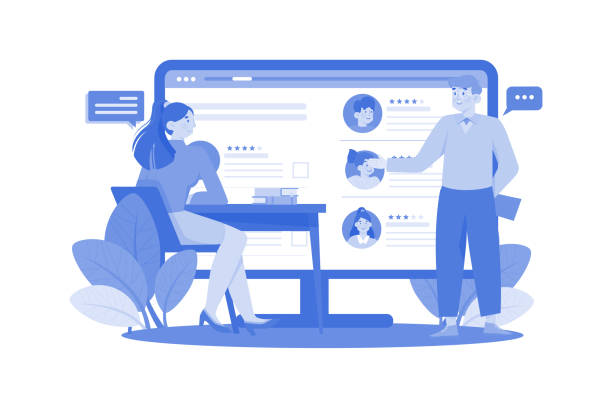
Having a comprehensive and intelligent #ContentStrategy for #MultilingualWebsiteDesign is as important as technical and SEO aspects.
#Today, merely translating core content into other languages is not enough; rather, content must be #Localized for the specific culture and needs of each target market.
This includes understanding cultural differences, local tone, and even using examples and references that are understandable and appealing to local audiences.
Translated content that has not been properly localized may not only be ineffective but can even harm brand reputation.
This is not #UnquestionableContent, but a necessity for global success.
The first step in content strategy is identifying the target #Audience in each language and country.
Who are they? What are their needs? How do they access information? Answering these questions helps you create content that truly resonates with them.
Then, you need to decide which parts of your content require full translation and which sections should be written from scratch for that specific language or culture.
For example, an “About Us” page might need accurate translation, but a blog post related to local news should be written from scratch for that market.
This process requires a precise #Analysis of content goals and audiences.
Also, ensuring #Translation quality is highly important.
Using native and specialized translators in your field of work is the best way to ensure accuracy and clarity of the message.
Machine translation can be useful for initial translations or non-sensitive content, but for key and marketing content, investing in professional human translation is a high-yield investment.
This is a key #Guidance that ensures the quality of your multilingual website design.
Furthermore, the content calendar and content update process should also be designed so that all language versions are regularly updated and no language falls behind.
This is a #Specialized aspect of content management on an international site.
Finally, multilingual website design requires attention to details that improve the user experience.
This includes ensuring that images and videos are also appropriate for each culture, that date and currency formats are displayed correctly, and that interactive processes such as contact forms and purchase flows work correctly in all languages.
This #Educational approach helps you provide a seamless and engaging user experience for all your visitors, regardless of their language.
User Experience (UX) and User Interface (UI) Design in Multilingual Websites

In #MultilingualWebsiteDesign, user experience (#UX) and user interface (#UI) design gain additional importance.
#Today, users expect websites to not only be available in their language but also to have a native and natural feel.
This means going beyond mere text translation and includes a deep understanding of cultural differences in how users interact with websites, visual design, and even element layout.
A #Specialized UX and UI for each language can significantly impact conversion rates and customer satisfaction.
This is a very important #Educational aspect in the design process.
One of the first considerations is #LanguageSelection.
The method by which users choose their language should be clear, accessible, and intuitive.
Typically, a dropdown menu in the site header, flag icons, or full language names are used.
Ensure that users’ selected language is maintained throughout the site and they are not forced to re-select the language every time.
Also, considering Text Direction for languages like Persian and Arabic, which are written from Right-to-Left (RTL), is very important.
Multilingual website design must consider these fundamental differences to prevent any visual or functional disruption.
Visual design must also be localized for each culture.
Colors, images, and even symbols may have different meanings in various cultures.
For example, the color red symbolizes love in some cultures and danger in others.
Ensure that your visual choices align with the target audience’s culture.
Also, forms, dates, currency units, and phone numbers should be displayed in local formats to make users feel more comfortable.
These small details can make a big difference in the overall user experience.
This is precise #Guidance for improving user experience.
Finally, #UserTesting with native users in each language is crucial.
These tests can help identify weaknesses in UX/UI that might not be immediately apparent to the development team.
By receiving direct feedback from users, you can implement necessary improvements and ensure that your multilingual website design provides a consistent and pleasant experience for all users.
This approach is not #UnquestionableContent, but an essential step for continuous optimization.
To better understand these details, the table below shows some UI/UX elements that should be considered in a multilingual website:
| UI/UX Element | Multilingual Considerations | Goal |
|---|---|---|
| Language Selector | Be clear and accessible (e.g., in the site header), use full language names instead of flags. | Allow users to easily select their language. |
| Text Direction (RTL/LTR) | Apply appropriate CSS for Right-to-Left languages (Persian, Arabic, Hebrew). | Maintain readability and visual appeal for all languages. |
| Forms and Inputs | Localize date formats, currency, phone numbers, and postal codes. | Reduce user error and increase trust. |
| Images and Symbols | Ensure images and symbols are appropriate for different cultures. | Prevent cultural misunderstandings and enhance visual appeal. |
| Navigation | Ensure logical navigation structure and link naming in all languages. | Help users find needed information easily. |
Testing and Maintenance of Multilingual Websites

The process of continuous #Testing and #Maintenance is an inseparable part of the #MultilingualWebsiteDesign lifecycle.
After development and launch, these websites require precise monitoring and regular updates to deliver flawless performance across all languages and regions.
#Today, the market and technology are rapidly changing, and a dynamic website must be able to adapt to these changes.
Failure to conduct comprehensive tests and proper maintenance can lead to serious problems in user experience, SEO, and even customer loss.
This is an #Explanatory process that clarifies the importance of continuous monitoring.
One of the most important aspects of testing is #FunctionalTesting and #LocalizationTesting.
Functional testing involves checking all links, forms, buttons, and purchase processes in each language to ensure everything works correctly.
Localization testing also includes checking the accuracy of translations, cultural appropriateness of content, correct formatting of dates, currency, and numbers, as well as ensuring proper display of visual elements in each language.
Multilingual website design must be tested in various environments (different browsers, devices, and operating systems) to ensure full compatibility.
These tests should be performed by native speakers to correctly identify cultural and linguistic nuances.
This is essential #Guidance to ensure quality.
In terms of #Maintenance, regular content updates, SEO optimization for new keywords, and website performance monitoring are highly important.
#News and updated content can attract visitors and help maintain the site’s ranking in search engines.
Also, monitoring #Analytical tools like Google Analytics to examine traffic from different regions, conversion rates for each language, and user behaviors can provide valuable insights for future improvements.
This data can help you make #Specialized and informed decisions regarding future investments in specific languages or geographical regions.
Ultimately, multilingual website design is not a one-time project but an ongoing commitment.
By investing in regular testing and maintenance, you can ensure that your international website is always at its peak performance and contributes to your business goals in global markets.
This is a continuous #Educational process that leads to improvement with every new update and feedback, advancing you on the path to globalization.
Active maintenance and responsiveness to market changes help your multilingual portal remain relevant and effective.
Are your online sales not as expected? With Rasaweb, solve the problem of low sales and poor user experience permanently!
✅ Increase visitor-to-customer conversion rates
✅ Create an enjoyable user experience and boost customer trust
⚡ Act now to get a free consultation!
Advanced Tips and New Technologies in Multilingual Website Design
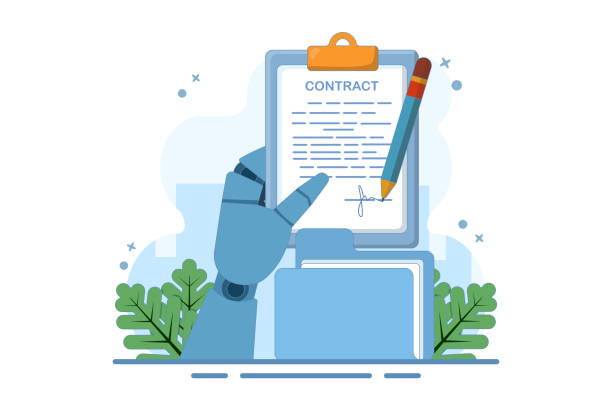
With rapid advancements in web #Technology, #MultilingualWebsiteDesign also leverages new and advanced solutions to provide an unparalleled experience for international users.
#Today, beyond simple translation, tools like Artificial Intelligence (AI) and Machine Learning (ML) are changing how multilingual content is managed and delivered.
These technologies can optimize translation processes, deliver personalized content, and even automatically answer user questions in various languages.
This is an #Engaging and innovative aspect of web development that can revolutionize the user experience.
One of the most important advancements is the use of #NeuralMachineTranslation (NMT), which has significantly improved translation quality.
Although not yet a complete substitute for human translators, it can be very useful for large volumes of content or when rapid publication of news and updates is required.
Integrating these systems with the website’s CMS facilitates the translation process automatically, without the need for continuous manual intervention.
This #Specialized capability allows businesses to enter new markets more quickly and always have up-to-date content.
Furthermore, multilingual website design with these automated tools provides greater scalability.
In addition to translation, #ContentPersonalization technologies are also growing.
By using user data and AI algorithms, relevant content and products can be displayed based on users’ language, location, past behavior, and even cultural preferences.
This approach is particularly useful for e-commerce websites looking to increase conversion rates.
This is a deep #Analysis of user behavior that can lead to increased sales.
For instance, a German user might see different products on the homepage compared to a French user, even if both are browsing the website in English.
Finally, using a #ContentDeliveryNetwork (CDN) is very important to ensure high loading speed for users worldwide.
CDNs store your website’s content on servers close to the target audience, which minimizes loading time and improves the user experience.
This is technical #Guidance that impacts site performance.
Multilingual website design, by utilizing these new technologies, not only helps you reach new markets but also provides an advanced and distinctive user experience that can set you apart from competitors.
These are #Illustrative steps towards a brighter future for your international website.
Conclusion and Next Steps on the Path to Globalization

Ultimately, #MultilingualWebsiteDesign is no longer a luxury option but a strategic #Necessity for any business aspiring for #Success in global markets.
As #Explained in previous sections, this process goes beyond mere translation and includes precise localization, specialized SEO, and attention to a unique user experience for each culture.
By correctly implementing a #MultilingualWebsite, you can not only reach a wider audience but also enhance your brand’s credibility and build deeper relationships with your international customers.
This is a final #Analysis of the importance of this approach.
The next steps on the path to globalization include continuous #Monitoring and #Optimization.
Markets and technologies are constantly changing, so your website must keep pace with these changes.
Regularly review #Analytical data to identify your website’s strengths and weaknesses in each language.
Listen to user feedback and use it to improve the user experience.
Keep your content up-to-date and always look for new opportunities to expand your online presence.
This is practical #Guidance for maintaining a competitive edge.
Also, keep in mind that investing in multilingual website design is a long-term investment.
Return on investment may not be immediately visible, but over time and with continuous efforts in SEO, content, and user experience, you will see significant growth in traffic, engagement, and conversion rates.
This #Educational process will accompany you along the way.
Collaborating with specialists in translation, SEO, and web design can greatly assist you in overcoming challenges and achieving your global goals.
In conclusion, multilingual website design empowers you to transcend geographical boundaries and establish your business internationally.
By having a well-designed and maintained #MultilingualPortal, you not only possess a powerful marketing tool but also build a bridge for interacting with the world.
This is an #Engaging yet #Specialized opportunity for any brand that wants to have a strong presence in today’s world and achieve sustainable growth.
The future belongs to businesses that can think globally and act locally.
Frequently Asked Questions
| Question | Answer |
|---|---|
| What is a multilingual website? | A website whose content is available to users in several different languages. |
| Why should we design a multilingual website? | To expand access to international audiences, increase website traffic, improve SEO in target markets, and provide a better user experience for non-Persian speaking users. |
| What are the main methods for implementing a multilingual website? | Using subdomains (e.g., en.mysite.com), using subdirectories (e.g., mysite.com/en/), and using separate domains for each language (e.g., mysite.com and mysite.de). |
| Which implementation method is better for SEO? | Generally, using subdirectories (language folders) is often recommended due to the transfer of main domain authority to other languages. |
| What is the Hreflang tag and what is its use? | An HTML tag or HTTP Header that informs search engines which version of the page is appropriate for which language or geographical region. This tag prevents Duplicate Content and improves SEO. |
| How is the Language Switcher designed? | Usually by using a dropdown menu, button, or flag in the site’s header or footer, which allows the user to select their desired language. |
| Is automatic (machine) translation suitable for a multilingual website? | No, machine translation usually has low quality and many errors that can harm the site’s credibility. Human translation or a combination of human translation and machine editing is recommended. |
| What are the most important SEO tips in multilingual website design? | Correct use of Hreflang tags, having an appropriate URL structure for each language, translating titles and meta descriptions, translating core content, and internal linking between related language versions. |
| Should all website content be translated? | It depends on the strategy. Usually, the main and important content of the site should be translated. Less important sections or blogs may not require full translation. |
| What are the main challenges in multilingual website design? | Managing content in different languages, translation costs, technical issues related to URLs and language tags, template compatibility with Right-to-Left (RTL) languages like Persian and Arabic, and managing multilingual SEO. |
And other services of Rasaweb Advertising Agency in the field of advertising
Smart UI/UX: A fast and efficient solution for customer acquisition with a focus on attractive user interface design.
Smart Website Development: A specialized service for online growth based on custom programming.
Smart Brand Identity: A specialized service for increasing sales based on attractive user interface design.
Smart Social Media: Transform campaign management with the help of key page optimization.
Smart Direct Marketing: A specialized service for growing user engagement based on key page optimization.
And over hundreds of other services in the field of internet advertising, advertising consultation, and organizational solutions
Internet Advertising | Advertising Strategy | Advertorial
Sources
Comprehensive Guide to Multilingual Website Design
Strategies for Entering Global Markets
Multilingual Website SEO Tips
International Marketing for Websites
? With Rasaweb Afarin, your business will soar in the digital world! We offer innovative and results-driven solutions for your growth, including responsive website design, SEO, and content marketing.
📍 Tehran, Mirdamad Street, next to Bank Markazi, Southern Kazeroun Alley, Ramin Alley, No. 6

